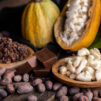
If you have reached midlife I am sure you are familiar with the may changes our bodies . Metabolism slows down, muscle mass naturally decreases, and our nutritional needs evolve. One nutrient that becomes particularly important during this phase is protein. Protein plays a critical role in maintaining muscle mass, supporting bone health, boosting metabolism, and promoting overall well-being. However, it can sometimes be challenging to get enough protein at each meal, especially if you’re juggling a busy lifestyle.
So how much protein is enough to support your daily nutrition? What protein source is the most appropriate? Am I getting enough protein in my diet if I am vegetarian or vegan? These are the typical questions I am usually asked by my clients.
Generally speaking the best source of protein comes from lean meats, fish, legumes, grains and eggs. If you are following a vegetarian or vegan diet it is important to combine protein sources to make sure you consume all essential amino acids. Unlike animal produce which contain all essential amino acids, plant sources of protein are not complete so they need to be combined. The good news is that the amino acids lacking from legumes for example are present in the grains, that is why it is particularly important to combine protein sources in plant based diets. In addition to that you should supplement a vegetarian diet with vitamin B12 as this vitamin is only present in meat products.
When it comes to quantity we should aim to consume between 1.2g and 2g of lean protein per kg of body weight daily. To give an example if your weight is 55 kg your ideal daily protein consumption should be at least 66g, more if you have an active lifestyle. Typically you should aim between 20 and 30 g of protein at each meal.
If you’re looking to optimize your protein intake and support your health as you age, here are some practical tips on how to increase protein at each meal:
1. START WITH BREAKFAST
Breakfast is a great opportunity to pack in protein, yet many traditional breakfast foods are carb-heavy and protein-light. Aiming for a balanced, protein-rich breakfast helps set a positive tone for the rest of the day.

Tips for a protein-packed breakfast:
Eggs: Whether scrambled, boiled, or in an omelet, eggs are an excellent and versatile source of protein. Try adding veggies like spinach, bell peppers, or tomatoes to your omelet for added nutrition.
Greek Yogurt: Choose plain, unsweetened Greek yogurt for a protein boost. You can add berries, nuts, and seeds for extra flavor and texture.
Protein Smoothies: Blend up a smoothie with a scoop of protein powder (whey, pea, or hemp), leafy greens, chia seeds, and a handful of frozen fruit for a quick, nutrient-dense meal.
Cottage Cheese: Pair cottage cheese with fresh fruit or mix it into a savory dish with avocado and herbs for a satisfying, high-protein breakfast.
2. SNACK WISELY
Snacking is a great opportunity to sneak in additional protein between meals, and it can help you maintain stable energy levels throughout the day.
High-protein snack ideas:
Nuts and Seeds: Almonds, walnuts, sunflower seeds, or pumpkin seeds are great options that pack a protein punch. They are also rich in calcium and magnesium so a very smart and tasty snack.
Edamame: These protein-packed soybeans are a quick and easy snack. Simply steam and season with a bit of salt for a satisfying treat. Edamame is also a source of phytoestrogen which is an important nutrient in peri-menopause and post menopause.
Hard-Boiled Eggs: Prepare a batch of hard-boiled eggs ahead of time to grab when hunger strikes.
Hummus and Veggies: Dip raw veggies like carrots, cucumber, or bell peppers in hummus for a tasty, protein-rich snack. Great all round, proteins and all the vitamins and minerals from the veggies.
3. LUNCH: ADD PROTEIN TO SALADS
Salads are a lunchtime staple, but to ensure you’re getting enough protein, you need to amp up the toppings. While greens and veggies are essential, they can be a bit light on protein.
Protein-packed salad add-ins:
Grilled Chicken or Turkey: These lean meats are a great source of high-quality protein.
Tuna or Salmon: Canned tuna or salmon (look for wild-caught varieties) is not only an affordable option but also packed with protein and omega-3 fatty acids.
Tofu: If you’re vegetarian or vegan, tofu is a great plant-based protein source that can be grilled, baked, or sautéed.
Chickpeas or Lentils: These legumes are rich in protein and fiber and can be added to salads, wraps, or bowls.

4. DINNER: PRIORITISE PROTEIN-RICH MAIN DISHES
Dinner is typically when you sit down for your largest meal, so it’s the perfect time to focus on protein. By including a variety of protein-rich foods, you ensure you meet your daily requirements and nourish your muscles and bones. Personally I prefer to keep my meals balanced and try to avoid a heavy dinner. Balance is key especially in midlife when the hormonal balance shifts it is crucial to maintain a certain equilibrium across all areas. Holistic balance starts in the gut.
Dinner protein options:
Fish and Seafood: Salmon, trout, sardines, and shrimp are not only high in protein but also loaded with healthy fats and other essential nutrients.

Lean Meats: Choose lean cuts of beef, pork, or lamb, or opt for skinless poultry like chicken or turkey. If you’re concerned about saturated fat, lean cuts like chicken breast or turkey tenderloin are great choices.
Plant-Based Proteins: Incorporate quinoa, lentils, black beans, or chickpeas into your dinner. These plant-based proteins provide essential amino acids, especially when paired with whole grains.
Protein-Rich Pasta: Look for pasta made from legumes, like chickpeas or lentils, which provides more protein and fiber than traditional pasta.
5. INCORPORATE PROTEIN-RICH SIDE DISHES
Side dishes often get overlooked when it comes to protein, but adding a protein-rich side can make a big difference. Instead of a side of white rice or potatoes, opt for alternatives that offer more protein.
Protein-rich side dishes:
Quinoa: A complete protein, quinoa contains all nine essential amino acids, making it a great addition to any meal.
Beans and Lentils: These legumes are excellent sources of plant-based protein and can be used in soups, salads, or as side dishes.
Greek Yogurt or Cottage Cheese: These dairy products are packed with protein and can be used as sides or served with fruit for a light dessert.
6. BOOST PROTEIN IN SOUPS AND STEWS
Soups and stews are comforting and versatile, making them ideal for adding more protein. While traditional recipes may lean on vegetables and starches, it’s easy to up the protein content.
Ways to boost protein in soups:
Add Lean Meats: Chicken, turkey, beef, or pork are all great options to add to soups and stews.
Include Beans and Legumes: Lentils, kidney beans, chickpeas, and black beans are excellent plant-based sources of protein that can transform a vegetable soup into a filling meal.
Use Bone Broth: If making a soup base, opt for bone broth, which contains collagen and other proteins that support joint and skin health.
CONSIDER PROTEIN SUPPLEMENTS
While whole foods should always be your primary source of protein, protein supplements can be a convenient and effective way to meet your needs, especially if you’re busy or on the go and they are great after your gym work-out.
Protein supplement options:
Protein Powder: Choose high-quality protein powders, such as whey, pea, or hemp protein, and mix them into smoothies, oatmeal, or even baked goods.
Protein Bars: When you’re in a pinch, protein bars can be a quick, portable way to increase protein intake. Look for bars with minimal sugar and added nutrients.
8. HYDRATE WITH PROTEIN-RICH DRINKS
Incorporating protein into your beverages can be a delicious way to supplement your intake. Some drinks are specially formulated to provide a good dose of protein, making them an easy addition to your daily routine.
Protein drink options:
Protein Shakes: Pre-made protein shakes or powders mixed with water, milk, or a dairy alternative are a great post-workout option or meal replacement.
Milk or Plant-Based Milks: Choose higher-protein versions of milk (such as soy or pea milk) if you’re seeking a milk-based option for smoothies or morning coffee.

Banana, kiwi, apple smoothie with chia seeds
9. DON’T FORGET COLLAGEN
Collagen is an often-overlooked source of protein that offers unique benefits, especially for women in midlife. Collagen supports skin elasticity, joint health, and bone density, all of which are important as we age.
Collagen-rich foods and supplements:
Bone Broth: As mentioned earlier, bone broth is rich in collagen, which supports your skin, hair, and joints.
Collagen Powder: Add collagen powder to your morning coffee, tea, or smoothie for an extra protein boost.
Increasing your protein intake at each meal is a powerful way to support your body through the changes of midlife. By focusing on nutrient-dense, protein-rich foods, you’ll be nourishing your muscles, bones, metabolism, and overall health. So next time you plan your meals, think of ways to add protein at every opportunity – your body will thank you for it and you’ll soon see the changes!
To conclude I hope you will enjoy trying some of these suggestions to increase your protein intake and feel free to share with us in the comments or on Instagram what is your going to protein meal or snack that you just can’t go without.





